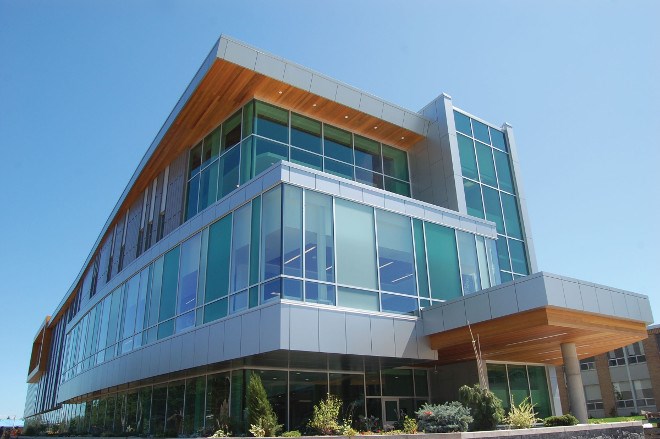Sault College is making an $18.2-million investment into a new facility that will support new programs, applied research, and enterprise.
The Institute of Environment, Education and Entrepreneurship (iE3) will be built on campus and house programming in the natural environment, geographic information systems (GIS), and information and communications technology (ICT) sectors.
IE3 has been in the works for five years, and parcels of funding have been awarded from a number of parties.
The province provided the largest amount at $10.6 million, the federal government committed $5 million, the Northern Ontario Heritage Fund contributed $2 million, and the City of Sault Ste. Marie is putting in $400,000.
John Coccimiglio, Sault College’s manager of applied research and innovation, said the institute will help enhance the college’s offerings, both in programming and applied research.
“There’s a real synergy between the technologies,” he said. “That was the idea behind having these groups of people together, so that they can really benefit from their own specific knowledges, because oftentimes innovation happens at the interface between two disciplines.”
With the new facility will come new programs making use of new technology; in particular, there will be applications for drones, which are already in wide use in forestry applications and of ecological management functions.
“As these demands continue to progress, we’re going to be positioned with the new iE3 to teach these skills that are going to be needed,” Coccimiglio said. “So drone technology is one of the things we plan to teach as one of the new programs.”
The facility will play an equally important role in creating collaborations with the private sector, he noted.
Companies will benefit from being on campus and using critical resources, such as the professors, technicians and students, while the students will gain from hands-on, experiential learning opportunities that encourage them to start thinking about self-employment as a viable career option.
“The way it’s been designed is flexible,” Coccimiglio said. “It will be able to accommodate the rapidly emerging technologies an industry needs that will happen in the next 10 or 20 years. Not only accommodate them, but accelerate them, accelerate their development and progress, and that in itself is going to lead to investment and business growth in Northern Ontario.”
The iE3 will comprise 75,000 square feet, including 50,000 square feet of refurbished space and 6,000 square feet of new construction.
Demolition has already begun on the spaces slated for refurbishment, and construction will begin nearer to spring. Sault Ste. Marie firm EPOH has been tasked with designing the building, and the first architectural schematics are expected in April, at which time a tender will be issued for construction, which is anticipated to start this summer.
Construction should be complete by the summer of 2018, and students will be in the facility for classes that fall.
A highlight of the iE3 will be a large, flexible lab space with a moveable partition to break up the space into smaller labs.
If the school is collaborating on a project with a private company, a part of the space can be partitioned off for the company to use for the duration of the project, while the remaining space will still be available for student use.
“We're going to have office spaces that will be flexible for private sector use as well, and some nice meeting areas,” Coccimiglio said. “We'll have multimedia meeting rooms for the collaboration with companies, and all these things will make it much more efficient relative to the way we have been doing it.”
The architects are also looking to incorporate a green component to construction: there are plans to expand the greenhouse and use roof-mounted solar technology. Construction of the facility is expected to create up to 166 temporary jobs.
Once complete, the facility will require an additional five full-time equivalent positions for faculty and technicians, and 10 part-time positions.
But Coccimiglio anticipates more staff could be needed as demand for the program grows.
Though Coccimiglio couldn’t say which industry private partners might work with the school on applied research projects, he said feedback he’s received has been very positive and a buzz is building around the institute.
With technology changing so rapidly, Coccimiglio said the building is being designed not just with current industry needs in mind, but in anticipation of what types of resources industry might need 10 or 20 years from now.
“It used to take 10 years to come to the next best thing; now it takes five, then it's going to take one,” he said. “So you need an institute that is dynamic, something that is going to accommodate that rapid change and accommodate almost anything you can throw at it, and that's what we're trying to build into the design.”
Coccimiglio also anticipates there will be opportunities for partnership with some the Sault’s world-class forestry institutions: Natural Resources Canada, Great Lakes Forestry Centre, and Ontario Forest Research Institute.
“So with this iE3, we're going to be positioned in Sault Ste. Marie, we'll have a great resource at the college, and also we have probably more than 100 expert scientists in these areas,” Coccimiglio said. “So I think that in itself will probably lead to some great collaborations in the future where we can work together.”




